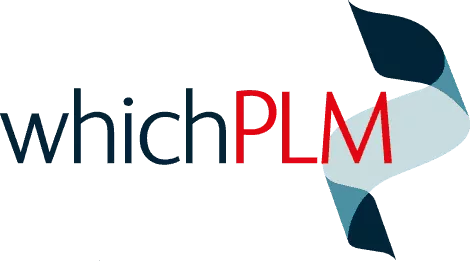
With risk and uncertainty persisting far beyond the pandemic, fashion’s traditional supply chain structures are proving ill-suited to overcoming disruption. The solution lies in replacing as many analogue links as possible to create a new, all-digital value chain.
Over the last several years, the Fashion & Textile industry has continued to find itself challenged with supply chain disruptions – not only at its Tier 1 factories but also including shortages from further up into Tier 2,3,4 raw materials. We continue to experience supply-chain lockdowns in China, the continuing war in Ukraine, global trade embargos, increased energy costs and related trade disputes that add enormous pressures on the structural weaknesses of our traditional analogue supply chains. These challenges highlight the reality of the fashion & textile industries’ reliance on outdated and, in the main, disconnected and siloed analogue supply chains.
Recently, China has announced a complete relaxation of its Zero-Covid tolerance, and the number of COVID cases in China has risen significantly, resulting in the Chinese authorities having to consider new control measures. The new wave of Covid cases will bring further pressure on China’s fashion supply chains, with other disruptions before it can upscale its vaccination program and get back to its normal levels of efficiency. However, this may not happen until mid or even autumn 2023!
Since the early 1980s, most fashion brands have been chasing low-cost production around the globe, moving from region to region in pursuit of lower-cost resources, which in the main has been cost-effective, based upon high volume production runs. These drivers have put constant pressure on resources of all types, not only materials but also labour, and it’s fair to say that this approach has led to some levels of distrust on all sides. It has also created islands of information, costing secrecy, including multiple versions of a product’s costs, poor performance and inefficiencies from outdated technology suppliers, and poor labour expertise and efficiency.
Lower-quality materials, trimmings, components and processing result in inferior-quality products. Then there’s the question of the fragmented, siloed data formats and mistrust between parties competing against each other rather than working together to resolve design and processing challenges. These are just a tiny sample of the realities of what’s happening with fashion’s traditional supply chain model.

A new paradigm based on digital connectivity has already started
More recently, we continue to see a shift away from large volume to low volume, less complex styles. Added to these changes are additional demands related to sustainability within the supply chain impacted by a continuous stream of new sustainability and environmental legislation. New legislation is forcing brands to deliver against its scope 1, 2 and 3 requirements which relate to the carbon emissions a company creates during its internal operations and across its wider value chain.
Fashion & Textile businesses that adhere to traditional analogue supply chain practices will continue to find themselves at greater risk of being blindsided by disruptions. Unless fashion changes its model, it will damage its ability to supply products to meet sales demands, damaging its reputation. We continue to read reports of brands impacted by supply chain disruptions (stockouts, late deliveries), making them vulnerable to shareholder concerns, harmful stock market noise or worse. Brands have reacted too late to recover their losses, and we can expect more of these cases during 2023. It takes years to transform from traditional analogue supply chains to digital value chains!
Leading brands urgently need to rethink their traditional supply chains to put themselves in an advanced position to respond quickly to market challenges, including what is happening in China today.
The fashion & textiles industry needs to rethink its supply chain model and change how it works with its global partners. It’s time to share modern technology platform ecosystems, Collection & Merchandising Planning, PLM solutions, 3D-DPC, and ERP, to name a few. With changing order sizes, shorter cycle times, sustainability measures, and style complexities, the analogue supply chain will not be able to deliver! Fashion and textiles must advance the model to a data-driven, fully collaborative digital value chain.

The fashion & textiles industry needs to transform itself quickly and maximise its digital reach. Brands need to share their technologies with their partners; they need to get away from the mindset of sharing cost money and share technologies and processes that help save money! They can even go further by designing Open APIs (application program interfaces) so that all relevant parties can work together, sharing data regardless of their preferred solution types and choices.
Transforming beyond Tiers 1 and 2, to include Tiers 3, and 4
As an industry, our focus has primarily been on partnering with Tier 1 Manufacturers (loosely partnered, that is!), and at best leading brands have partnered with T1 and T2 suppliers bringing material design and development into the supply-chain mix. The reality is that it’s still totally ineffective. It’s time to re-evaluate the fashion industry’s approach to its partner ecosystems. We must go further upstream into the value chain and deeper into supply chain data. We need to go further than ever before and understand what’s happening from the farms and chemical plants. We must educate designers and developers on how their choices regarding raw materials, colour, and material manufacturing process options relate to the environment.
Sustainability should not start and end with materials (which is what happens today!); we need to consider what goes into making materials, trims, components, packaging, and manufacturing products. We need to consider wastage; we need our sourcing and logistics teams to manage the end-to-end process sustainably and go beyond the new scope 1,2 and 3 regulatory requirements. These changes will necessitate joint partnerships based upon trust and collaboration, starting from Tier 4 partners, going all the way up to Tier 1, completely rethinking and transforming the way processes and data are shared and managed throughout the digital value chain. Track & Trace is another requirement for brands. Without these new partnerships driven by trusted data sources, the likelihood of delivering on TracK & Trace will be highly challenging!

Tiers 1-4 value-chain partner model
Brands (Tier 0):
These are the companies that design and market the clothing and accessories that consumers purchase. They may also have their retail stores or sell their products through department stores, online retailers, and other outlets. Examples of brands/retailers include Nike, Adidas, Puma, Ralph Lauren, Burberry, Zara, and M&S.
Factories (Tier 1):
These are the companies that manufacture the clothing and accessories for the brands. They are typically located in developing countries and may produce products for multiple brands simultaneously. Factories are responsible for sourcing materials, spreading, cutting, sewing garments, and packaging the finished products for shipment.
Mills (Tier 2):
They produce the raw materials used in clothing and accessories, such as fabric, yarn, and threads.
Trims & Components (Tier 3):
These companies produce more minor trimmings and components, such as buttons, zippers, labels, packaging, and elastics.
Farmers or chemical plants (Tier 4):
These businesses produce raw materials for clothing and accessories, such as cotton, wool, and synthetic fibres. Farmers may grow the raw materials, while chemical plants develop synthetic fibres through chemical processes.

Risk mitigation, Collaboration, Visibility and Traceability
Companies will not be able to reduce risks simply by dotting the I’s and crossing the T’s as part of their reporting. They will need to understand all the details from product design, materials & trims, processing methods, and purchase orders, ensuring that all the details are fully approved, up-to-date and included within a PLM technical specification. The fact is that most disruptions in the supply chain come from outside the brand’s headquarters, and they don’t often come from Tier 1 manufacturers. Brands must operate further upstream from Tier 2, 3 and T4 supplier partners. Keep in mind without the correct quality of trims, like buttons or labels. It’s impossible to finish the garment! Also, let’s not forget, or perhaps you don’t know, that very few brands, regardless of the maturity of their technology stacks and systems, truly understand who their Tier 3 & T4 partners are…!
The fashion & textiles industry needs to connect and share Design, PLM, ERP, and other related technologies across all partners (operating both down and upstream). If not, it will continue to be difficult, in fact near impossible, to deliver on real-time collaboration leading to risk reductions.
We need to remember that the fashion and textiles supply chain is very complex and as already stated, most brands, at best, are collaborating only with their Tier 1 and T2 partners. Today Tier 3 and 4 partners are in the main managed by Tier 1 manufacturers, often leaving a ‘blackhole‘ regarding real-time visibility of what and where trims and components come from, which is quite shocking but true!
Suppose the fashion & textiles industry is to identify potential risks and collaborate dynamically across the value chain. In that case, it must roll out and share supporting technologies to enable real-time end-to-end visibility, which will help traceability from raw materials to finished products. It is an all-or-nothing approach if brands want to move to a shared lower-risk value chain.

Removing non-value-added tasks, analysing, automating, and remodelling
Jointly working across a new digital model of related technologies, dynamically responding, learning, informing, and advising users on their choices related to best practices. The ultimate objective is to connect and streamline processes from brand to consumer across all T1-4 partners operating throughout the entire supply chain. We must create agility by removing non-value tasks (replicating administration and out-of-date reporting) and moving to a digital value-added model. Future collaborative value chains will utilise and greatly benefit from the increased use of Ai (artificial intelligence) and ML (machine learning), automatically creating product templates. AI will analyse real-time data flows operating across multiple shared technologies and ecosystems, reacting to the inputs and outputs (milestone gates, approvals, and disapproval notifications).
New value chains should include end-to-end real-time notifications (dynamic data views) and efficiency modelling, cost control to include raw materials and ‘fair’ labour, product traceability, environmental sustainability impact measurements, and value-chain risk mitigation.
Moving from a traditional analogue supply chain to a new data-driven value chain
The benefits of connecting T1 to T4 partners will provide real-time ‘facts’ that can be used to create a unique understanding of what’s happening deep and inside the extended supply chain. Remodelling ‘what if’ scenarios will help make informed, intelligent choices and provide new efficiencies that deliver bottom-line benefits for all businesses willing to move away from traditional inefficient analogue supply chains to a modern data-driven value chain.




